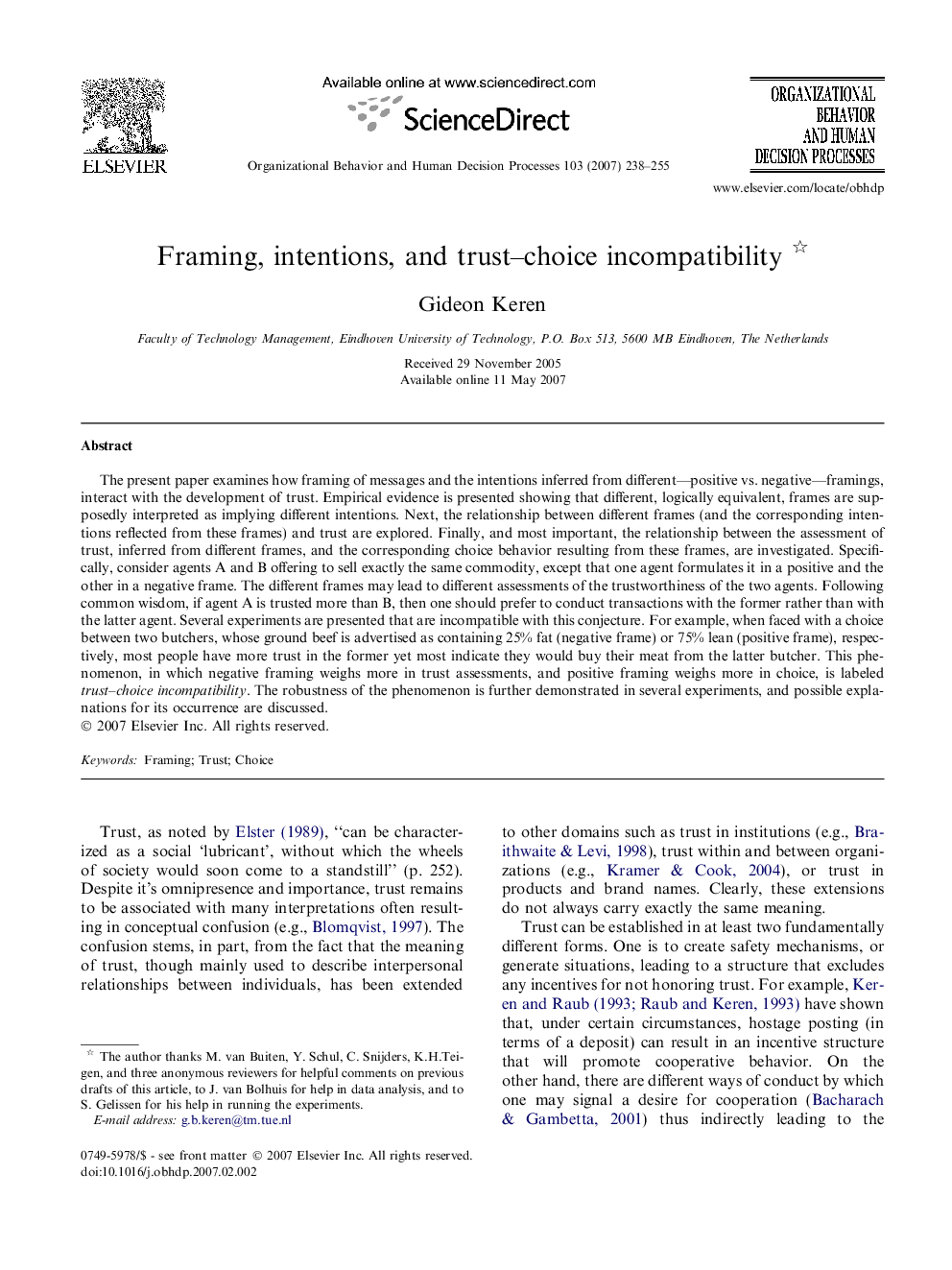| کد مقاله | کد نشریه | سال انتشار | مقاله انگلیسی | نسخه تمام متن |
|---|---|---|---|---|
| 888933 | 913585 | 2007 | 18 صفحه PDF | دانلود رایگان |

The present paper examines how framing of messages and the intentions inferred from different—positive vs. negative—framings, interact with the development of trust. Empirical evidence is presented showing that different, logically equivalent, frames are supposedly interpreted as implying different intentions. Next, the relationship between different frames (and the corresponding intentions reflected from these frames) and trust are explored. Finally, and most important, the relationship between the assessment of trust, inferred from different frames, and the corresponding choice behavior resulting from these frames, are investigated. Specifically, consider agents A and B offering to sell exactly the same commodity, except that one agent formulates it in a positive and the other in a negative frame. The different frames may lead to different assessments of the trustworthiness of the two agents. Following common wisdom, if agent A is trusted more than B, then one should prefer to conduct transactions with the former rather than with the latter agent. Several experiments are presented that are incompatible with this conjecture. For example, when faced with a choice between two butchers, whose ground beef is advertised as containing 25% fat (negative frame) or 75% lean (positive frame), respectively, most people have more trust in the former yet most indicate they would buy their meat from the latter butcher. This phenomenon, in which negative framing weighs more in trust assessments, and positive framing weighs more in choice, is labeled trust–choice incompatibility. The robustness of the phenomenon is further demonstrated in several experiments, and possible explanations for its occurrence are discussed.
Journal: Organizational Behavior and Human Decision Processes - Volume 103, Issue 2, July 2007, Pages 238–255